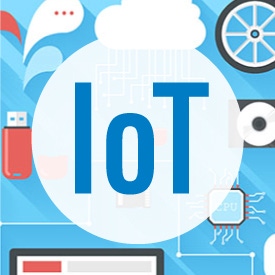
Opening up another chapter in its open source story, CableLabs this week took another shot at the industrial Internet of Things market with its LPWAN Server project.
The general concept is to create open source LPWAN Server software that can run on off-the-shelf hardware and support a wide range of low-power, IoT wireless technologies designed to transmit small bits of data over long distances. (See Blog: CableLabs Intros Open Source LPWAN Server.)
"We don't see one clear winner in the LPWAN space," said Daryl Malas, principal architect at CableLabs' advanced technology group. "We don't see NB-IoT (Narrowband IoT) dominating all use cases. And we don't see LoRA dominating all use cases."
CableLabs ' proposed approach is to develop an open source LPWAN server that enables cable operators and others to deploy sensors across this fragmented mix of technologies, but receive all of the data in a simplified, single application that would provide a level of consistency and normalization of that data.
That's better than trying to deal with multiple data silos for sensors that use multiple technologies, which "doesn't scale very well," Malas said. "And it also forces you into specific verticals."
The long-term intention of the project is to enable the routing of multiple LPWAN technologies, including LoRAWAN, Cat-M1, Weightless, NB-IoT and SigFox that use unlicensed or licensed spectrum, and therefore support a eclectic mix of sensor types.
The open source LPWAN Server will include a "relay server" that would enable IP traffic to mix with LoRA WAN traffic for a single upstream interface to an application or data collector, such as Google Cloud and Microsoft Azure, Malas pointed out in this blog post about the new effort.
The new server would "bridge across the different network platforms" and view those multiple networks as a single network, he added.
Aside from scale, another aim of the initiative is to help IoT service providers avoid single-vendor and single-technology lock-in, as it would enable them to test the deployment of products from multiple suppliers.
At this stage, CableLabs is starting to demonstrate the user interface and the ability to sync data between two network servers -- from The Things Network server and a LoRA server -- as well as between two versions of a LoRA server.
Figure 1:  The CableLabs open source project for a LPWAN Server envisions a multivendor, multi-technology IoT environment. (Image source: CableLabs.)
The CableLabs open source project for a LPWAN Server envisions a multivendor, multi-technology IoT environment. (Image source: CableLabs.)
Another significant goal of the project is to have developers add back-end integration with network servers and other technologies to enable this traffic routing across multiple LPWAN technologies.
Talks are underway with vendors about integrating their APIs into the project and establishing a common API that would eliminate the need for CableLabs to adapt to every variation of them on the backend, Malas said.
"We saw a need early on" for an open source LPWAN server, Malas said, noting that CableLabs started looking into it more than two years ago.
This project, which follows CableLabs's work on an open source LoRA Server, is also coming into focus as major CableLabs members such as Comcast Corp. (Nasdaq: CMCSA, CMCSK) (with machineQ ) and Cox Communications Inc. (with Cox2M) push ahead with their respective industrial IoT businesses. (See Comcast Opens Up on Smart Cities & machineQ, Comcast's Industrial IoT Platform Has Global Potential , Comcast, Cox Go Big on IoT, Smart Cities and Comcast Aims to Layer LoRa Into XB6 Gateway.)
Use cases for LPWAN span remote maintenance and control of factories and warehouses, smart maters for electricity, gas and water, and public infrastructure such as street lighting, smart parking and agriculture (water quality, temperature and humidity monitoring).
— Jeff Baumgartner, Senior Editor, Light Reading
About the Author(s)
You May Also Like











